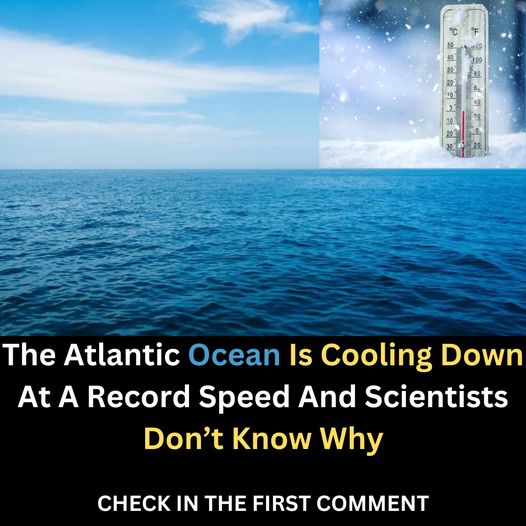A Perplexing Atlantic Ocean Cool Down: What’s Going On?
The Atlantic Ocean is currently experiencing a highly unusual and unexpected dip in surface temperatures, leaving scientists scratching their heads. This shift is particularly puzzling because it contrasts sharply with the trend of rising ocean temperatures that has dominated recent years.

A Sharp Drop in Ocean Temperatures
Historically, the Atlantic has been a hotspot for warming, especially in recent times as global temperatures continue to break records. However, over the last few months, a dramatic and unprecedented decline in surface temperatures has occurred, catching the attention of researchers worldwide.
According to data from the National Oceanic and Atmospheric Administration (NOAA), this cooling trend started in May. As of now, the Atlantic’s sea surface temperatures are about one to two degrees Fahrenheit below what’s typical for this time of year. This drop is surprising, given that ocean temperatures usually rise during this season, influenced by factors such as human-induced climate change and natural weather patterns.
The El Niño Effect and Its Reversal
One significant factor that typically drives warmer ocean temperatures is El Niño, a phenomenon characterized by above-average sea surface temperatures. Since March 2023, the Atlantic Ocean has been riding the wave of a strong El Niño, setting new heat records in the process. But now, it seems the tables might be turning.
The Atlantic may be on the brink of shifting into a La Niña phase much earlier than anticipated. La Niña, known for bringing cooler-than-average ocean temperatures, often arrives later in the year. This early cooling has left scientists grappling with the complexity of predicting these shifts. La Niña events are notoriously difficult to forecast, influenced by a myriad of factors including trade winds, solar heating, and rainfall patterns.
Scientists Stumped by the Sudden Shift
The abrupt change in the Atlantic’s temperature has left experts puzzled. Frans Philip Tuchen, a postdoctoral researcher at the University of Miami, expressed his confusion in an interview with New Scientist, stating, “We’ve reviewed all possible factors, but none seem to fully explain the situation.” This uncertainty underscores the challenges that come with understanding and predicting oceanic behavior.
Environmental Concerns on the Horizon
The implications of these unexpected temperature changes extend beyond just scientific curiosity. NOAA has pointed out that fluctuations between El Niño and La Niña could have significant impacts on weather patterns across nearby continents. For instance, rainfall patterns could shift, and there may be an increased likelihood of hurricanes forming near the Cape Verde islands.
Moreover, this Atlantic cooling might even delay the onset of La Niña in the Pacific, as the two oceans engage in what Michael McPhaden of NOAA describes as a “tug of war.” The interconnectedness of these oceanic cycles makes the situation even more complex, and scientists are keeping a close eye on how these developments might influence climate predictions for the rest of the year.
Conclusion
As the Atlantic Ocean continues to cool unexpectedly, the scientific community remains on high alert. The potential early arrival of La Niña in the Atlantic is a development that could have far-reaching effects, not just on ocean temperatures but also on global weather patterns. With so much still unknown, researchers are closely monitoring the situation to understand what this shift means for the future of our climate.





